WindhoekRoad to Namib
Our departure day had finally arrived. We flew from the new airport in Zagreb with the Qatar Airways. Airlines from the Middle East never disappoint, so everything went smoothly and after two flights and more than 15 hours in the air, we landed in Africa. A little tired but excited that we finally arrived.
Moments after landing, we experienced a minor shock (especially my wife =). The airport in Windhoek, the capital of Namibia, was flooded with grasshoppers. And they were big, much bigger than those in Slovenia. To make things a little more interesting, they also found a way to the airport building. It was quite amusing to observe the reactions of some passengers. Luckily this was our first and last encounter.
After completing the formalities, we first looked for a currency exchange. According to our travel plan, which did not include a lot of urban areas, we decided to change all of our money at the airport. This is usually regarded as a bad move. However, this is not the case in Namibia, where the rate at the airport is surprisingly good.
Public transport doesn’t really exist in Namibia, so if you’re not going to take a tour, you’ll need to hire a car. This was one of our favorite aspects of traveling in Namibia. After a short drive from the airport to city center, we picked up a Toyota Hilux (Double Cab with a roof tent), and moments later, we found ourselves on the road. To be more precise, on the left side of the road. Yes, Namibians drive on the left. Remembering to drive on the left is a problem for an hour or so. But it took us a little bit longer before we stopped trying to signal turns with the windscreen wipers. =)
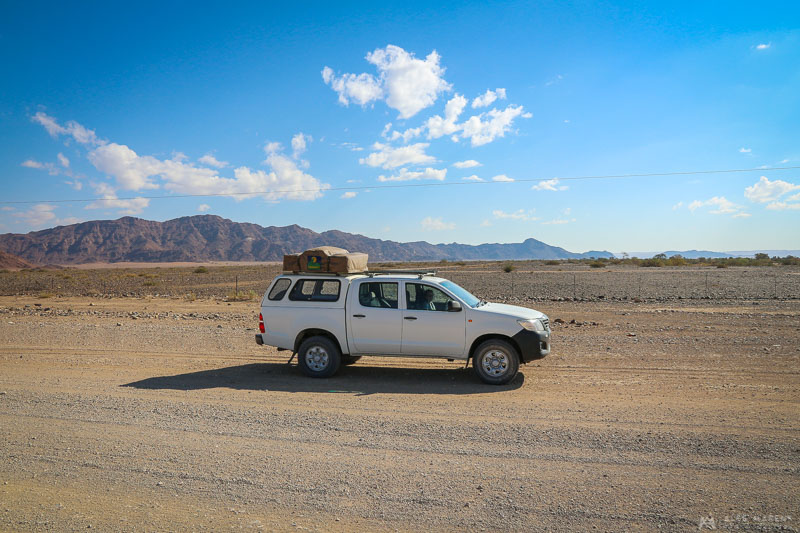
RehobothLake Oanob
The first stop of the road trip was a shopping center. In the next few days, we didn't plan to pass any town, so we had to buy all the supplies for the next few days. We quickly found a shopping center, asked a friendly gentleman to watch over our car, and after one hour we returned with a cart full of supplies. Fortunately, we had planned only an hour drive to Lake Oanob camp near the town Rehoboth for the first day. We reached our camp just before sunset, so we quickly set up a tent and enjoyed a nice dinner while watching how the sun was going down. After 36 hours, we finally fell asleep.
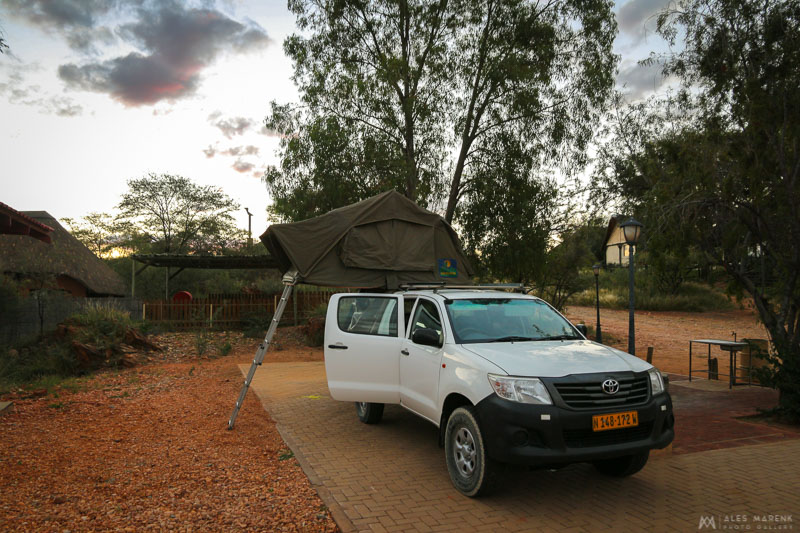
After a good night sleep, we quickly packed our things and continued our journey. First, we stopped at the gas pump, where we reduced the tire pressure to 1.8 bars because we were leaving the paved road for a few days.
The first few kilometers, we were a bit insecure, so we were driving slowly. As a consequence, the first truck that overtook us cracked our windscreen. Fortunately, the crack was not too big, so we continued as planned.
SesriemNamib desert
The goal of the second day was the Sesriem NWR camp, the only one located inside the Namib National Park. We had chosen this camp because the guests may enter Namib desert one hour earlier and leave one hour later than the visitors staying outside of the park.
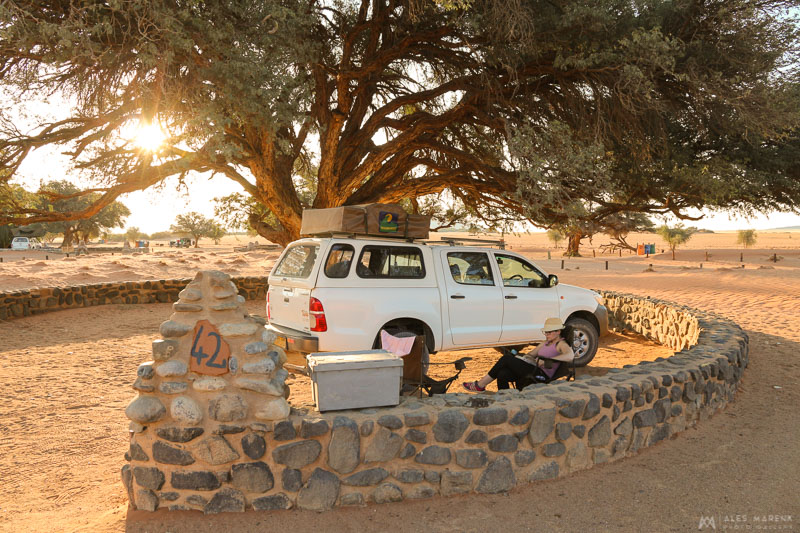
We arrived late in the afternoon, so we decided that it was too late for an extra hour of driving to the dunes. We cooked dinner and went to bed. The next day we woke up at 4 am. Our plan was to watch the sunrise over Deadvlei, which is a salt-clay pan surrounded by dunes. This pan has long been cut off from the Tsauchab River by a large sand dune. The result: a large number of dead camelthorn trees, which have been conserved by the extremely dry climate which prohibits the trees to decay. At the edge of the Deadvlei, you can climb the “Big Daddy” which is assumed to be the highest sand dune worldwide.
At 4:30, we were already at the entrance gates. It was still completely dark outside. For 45 minutes we followed a paved road, which ended at the large parking. Then we had three options: one was to walk for 1.5 hours, another one was to get an organized ride, and, last but not least, was to continue with the car and experience the off-road driving. We decided for an off-road adventure because we had the right car for it and … OK, who wouldn't choose off-road?
Driving through the sand is very similar to driving on a snowy road. The principle is to maintain enough speed and you should not stop. Well, we drove a bit too fast and just before the end we caught some friendly Germans ahead of us. We drove right into the sand cloud, with no visibility at all. After a few seconds, we fell into a large hole. Damn, it gave us quite a scare! Fortunately, there were no consequences and we safely arrived at the final parking lot and continued to the Deadvlei on foot. It was a short walk away.
At first, we were a little bit disappointed with the view but after a few minutes when the morning sun started to illuminate a huge red sand dune, everything changed. It really is a beautiful sight. Especially from the photographic point of view. After we had taken photos from every possible angle, we had a “picnic” on the lower level of the pan. Apparently, nobody noticed that, so we were alone for the whole time. It was getting hotter, so we decided to leave.
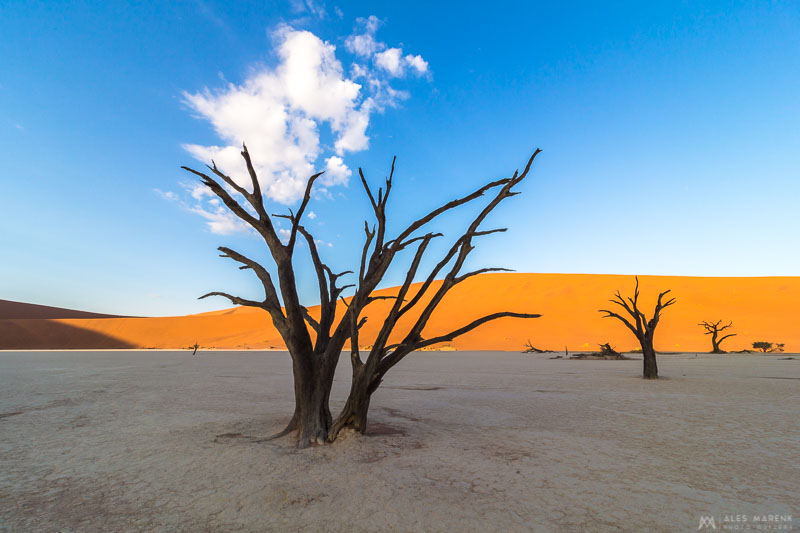
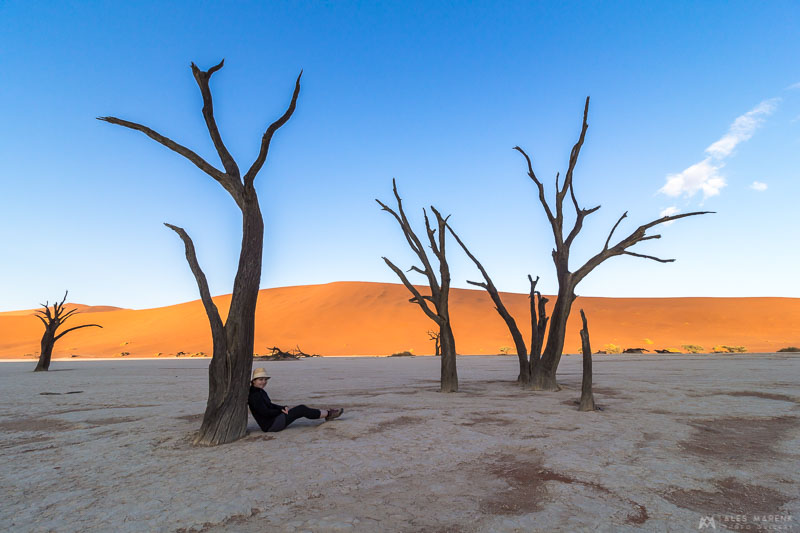
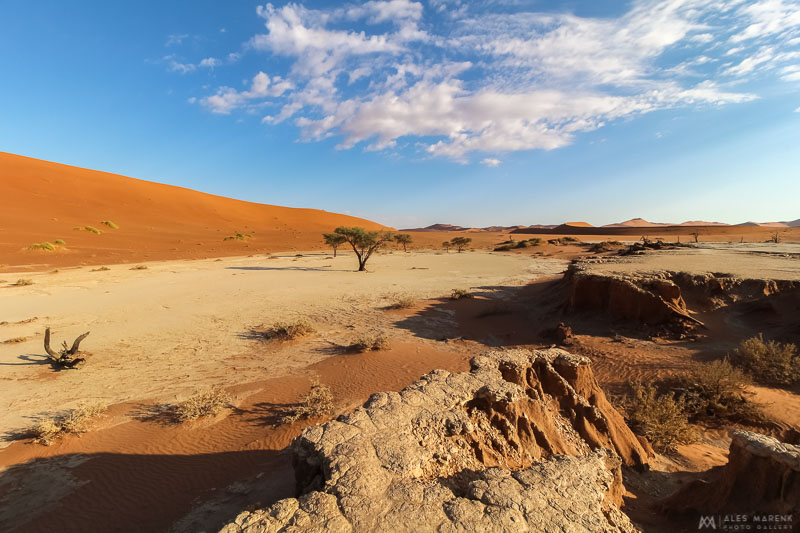
In the afternoon, we had a plan to climb one of the dunes but the strong wind upset our plans. On the other hand, however, the desert was full of oryxes, ostriches, and springboks, so we had a photoshoot around every corner.
Skeleton coastWalvis Bay
The next day we left the desert and headed towards the Atlantic Ocean. The more time we drove, the more we felt we were alone in the middle of the desert. After a while, the landscape slowly changed to Savannah. Here and there a herd of zebras crossed our path.
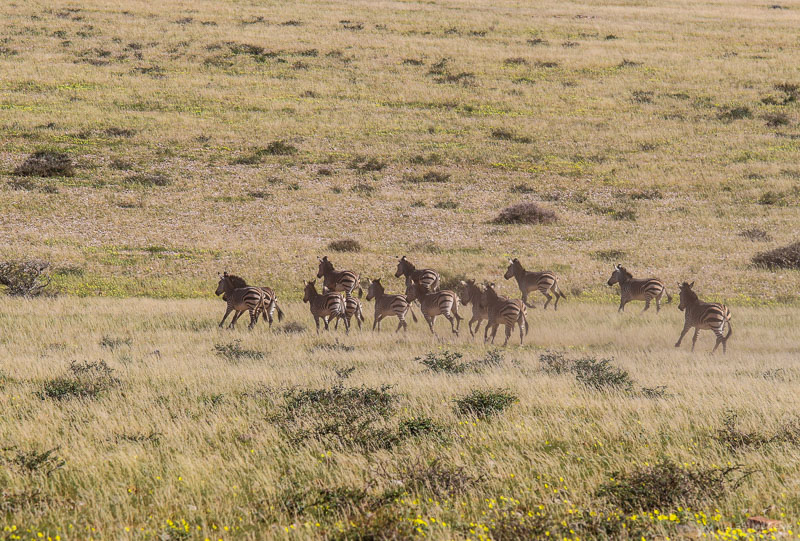
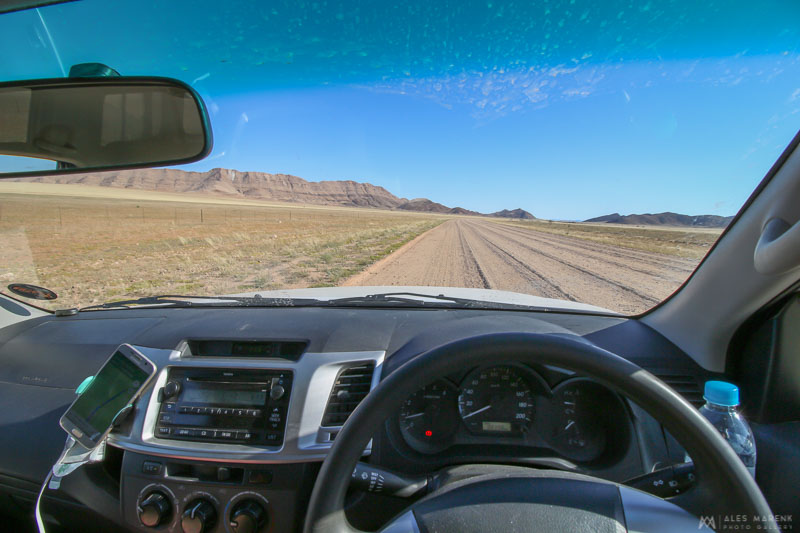
After 5 hours of driving, we finally arrived at Walvis Bay. The town is primarily known for flamingos that inhabit the surrounding lagoons every year. After a short tour in one of the lagoons, where we met the funny looking flamingos, we continued to the city of Swakopmund.
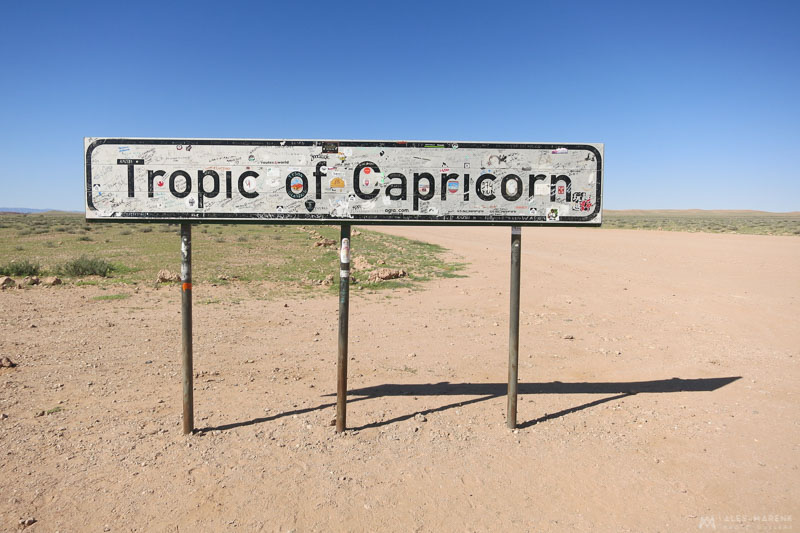
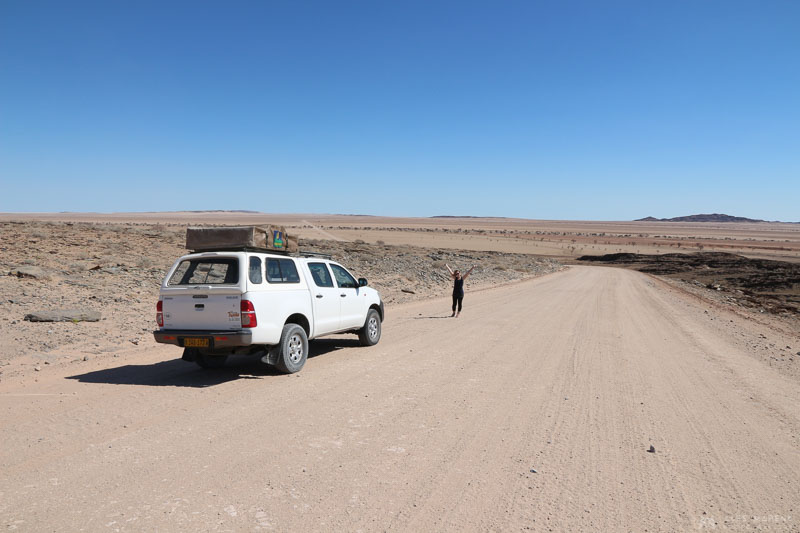
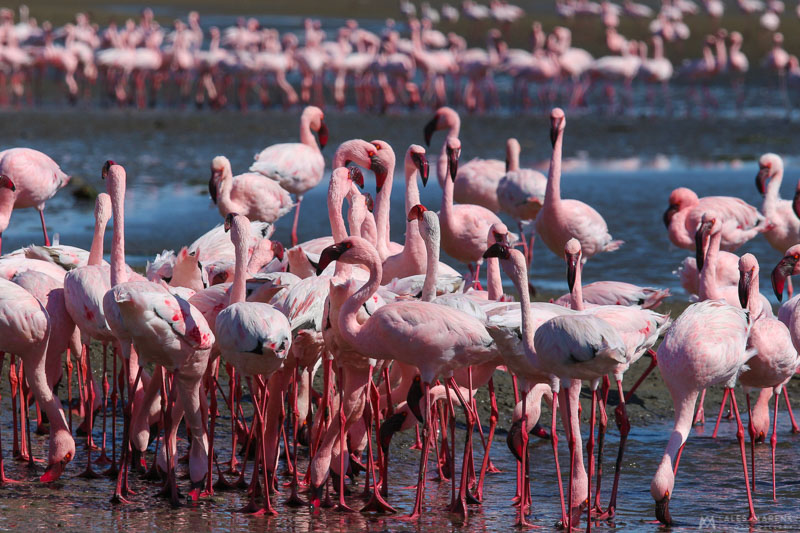
More in the next part.
You can find more pictures from Namibia here.